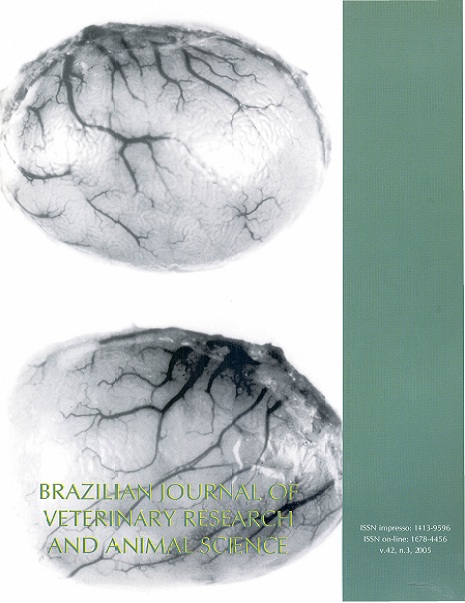Morphological features of the annual testicular cycle of quail (Coturnix coturnix) of the italian variety
DOI:
https://doi.org/10.11606/issn.1678-4456.bjvras.2005.26427Keywords:
Testicular cycle, Gonadosomatic index, Spermatogenesis, QuailAbstract
The histologic structure of the tubullar seminiferous epithelium and gonadosomatic index averages of domestic quail of the italian variety verified in all the seasons of the year was characterised that the spermatocytogenesis in this bird with a constant rhythm during the spring, the more active phase of the annual testicular cycle, and also the spermatogenesis did not stopped in the winter and summer, respectively. A quiescent phase of the cycle was observed from the beginning to the medium autumn in which the spermatogenesis was incomplete concerning the spermiogenesis, with consequent absence of spermatozoa formation. These features had an annual recurring pattern, which allowed to characterise a circannual cyclic rhythm to the quail's testis concerning to the spermatogenesis kinetics.Downloads
Download data is not yet available.
Downloads
Published
2005-06-01
Issue
Section
UNDEFINIED
License
The journal content is authorized under the Creative Commons BY-NC-SA license (summary of the license: https://
How to Cite
1.
Orsi AM, Stefanini MA, Viegas KA da S, Simões K, Artoni SMB. Morphological features of the annual testicular cycle of quail (Coturnix coturnix) of the italian variety. Braz. J. Vet. Res. Anim. Sci. [Internet]. 2005 Jun. 1 [cited 2024 Apr. 23];42(3):163-70. Available from: https://www.revistas.usp.br/bjvras/article/view/26427





